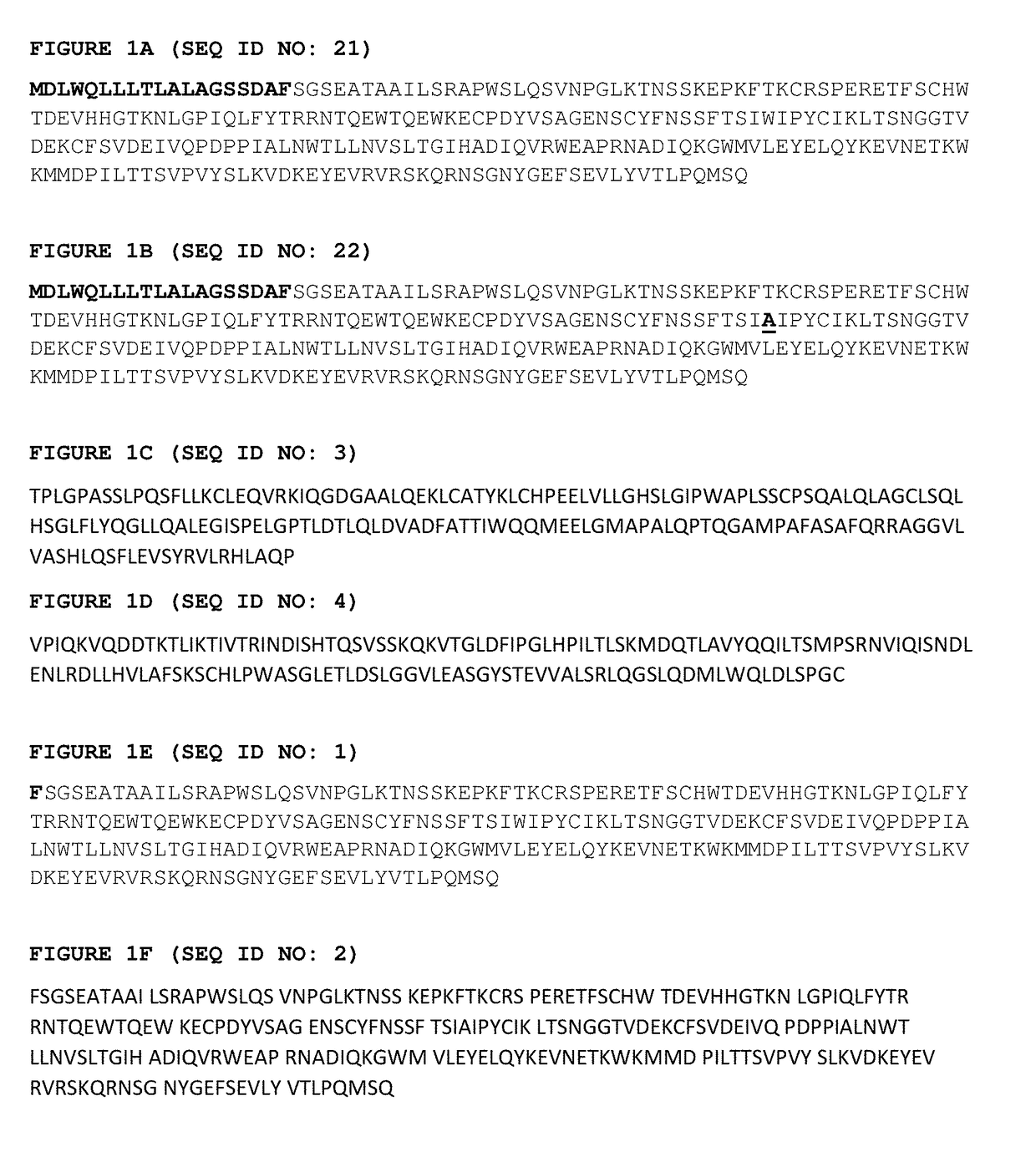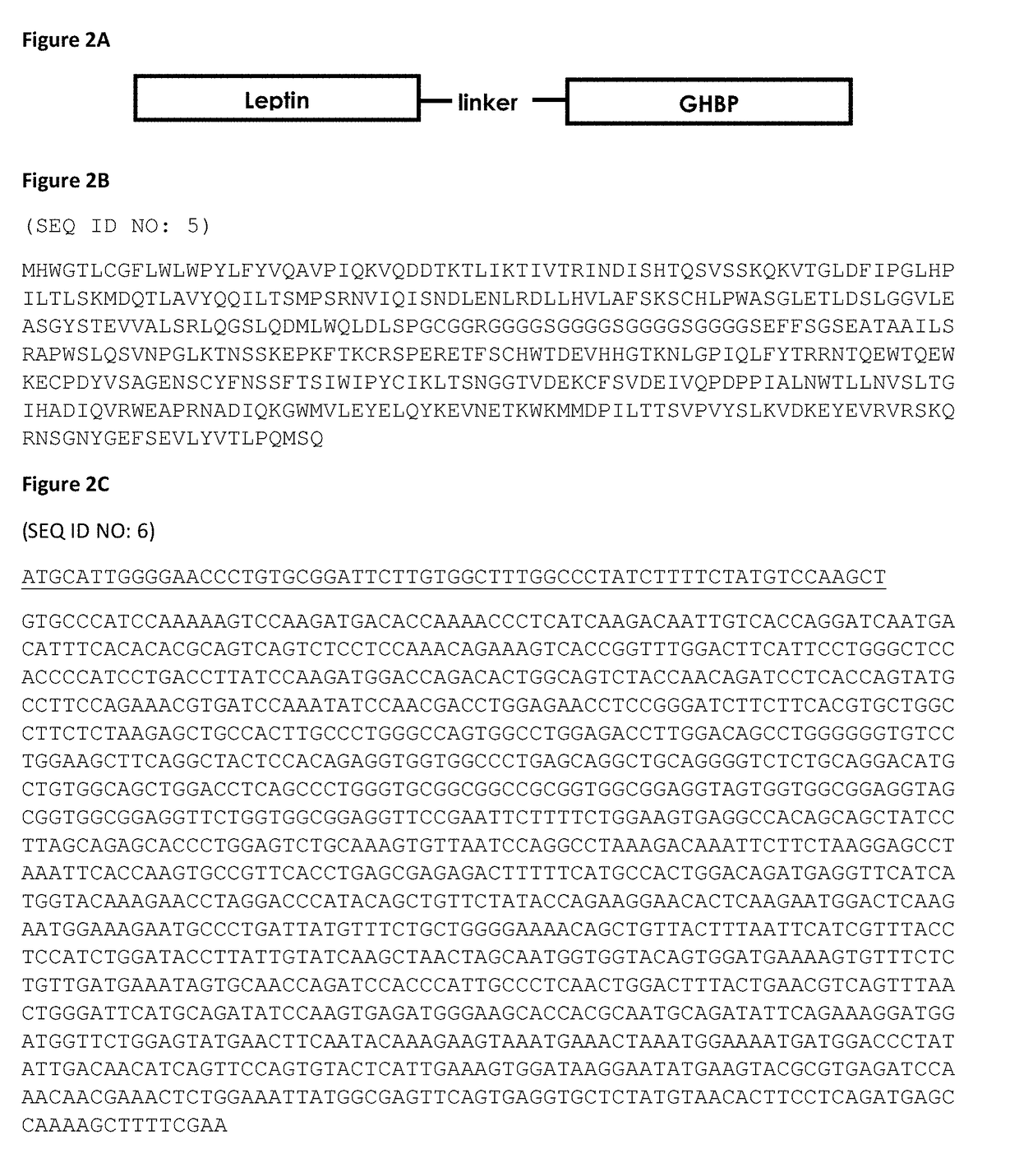Fusion polypeptide comprising the extracellular binding domain of growth hormone receptor
a technology of growth hormone receptor and fusion polypeptide, which is applied in the direction of fusions for specific cell targeting, obesity gene products, metabolism disorders, etc., can solve the problems of provoking a strong immune response, protein with a molecular weight above 70 kda is not cleared, and the clearance of serum, etc., to facilitate application, slow the progression of disease, and facilitate the effect of progression
- Summary
- Abstract
- Description
- Claims
- Application Information
AI Technical Summary
Benefits of technology
Problems solved by technology
Method used
Image
Examples
example 2
nk-GHBP (W104A in GHBP) (2N2)
[0163]Purified protein from 2 purification runs (Run #1 & Run#2) were analysed in the dual luciferase reporter assay. Both preparations show biological activity in the assay compared to PBS controls. A sample concentration of ˜450 nM was used in the assay. Both preparations show biological activity (FIG. 22).
example 3
-GHBP
[0164]The protein fusion construct GCSF-link-GHBP was designed without (FIG. 6B; SEQ ID NO 9) and with a W104A mutation in GHBP (FIG. 7B, SEQ ID NO 11). The expression gene for these constructs were generated and inserted into the expression vector, pSecTag, using conventional molecular biology techniques e.g. PCR, restriction digestion and ligation.
[0165]Expression was first established as transient transfections in CHO Flpln cells, using Fugene-6 or Mirus transfection reagent as the transfectant and a DNA:transfectant ratio of 2:3—the manufacturer's instructions were followed to achieve transfection. Expression was confirmed by western blot (FIG. 8A) using media from the adherent cell culture 72 hours post-transfection. The probe used for the western blot was anti-GCSF antibody.
[0166]A stable cell line expressing GCSF-link-GHBP+ / −W104A was then established by growing transfected CHO Flpln cells in the presence of Hygromycin B. The selective pressure of Hygromycin B ensured th...
example 4
tability Studies
[0170]A. Non-reduced gel: Test samples were incubated at room temperature, 4° C., and −80° C. (Freeze / Thaw). Samples were taken on day 0, 2, 4 and 8 and analysed by SDS-PAGE followed by Coomassie staining (5 μg protein loaded per lane). Both GCSF_GHBP (Top) and GCSF_W104A_GHBP (Bottom) showed no visible signs of degradation under all conditions studied over the 8 day period (FIG. 11).
[0171]B. Reduced Gel: Test samples were incubated at room temperature, 4° C., and −80° C. (Freeze / Thaw). Samples were taken on day 8 and analysed by native PAGE followed by Coomassie staining (4 μg protein loaded per lane). No visible signs of degradation under all conditions (FIG. 12).
[0172]C. Non-reduced gel: Test samples were incubated at room temperature, 4° C., and −80° C. (Freeze / Thaw) for 3 months. Samples were analysed by SDS-PAGE followed by Coomassie staining (4 μg protein loaded per lane). No visible signs of degradation for −80° C. samples. Minimal degradation for room temper...
PUM
| Property | Measurement | Unit |
|---|---|---|
| molecular weight | aaaaa | aaaaa |
| molecular weight | aaaaa | aaaaa |
| temperature | aaaaa | aaaaa |
Abstract
Description
Claims
Application Information
 Login to View More
Login to View More - R&D
- Intellectual Property
- Life Sciences
- Materials
- Tech Scout
- Unparalleled Data Quality
- Higher Quality Content
- 60% Fewer Hallucinations
Browse by: Latest US Patents, China's latest patents, Technical Efficacy Thesaurus, Application Domain, Technology Topic, Popular Technical Reports.
© 2025 PatSnap. All rights reserved.Legal|Privacy policy|Modern Slavery Act Transparency Statement|Sitemap|About US| Contact US: help@patsnap.com



